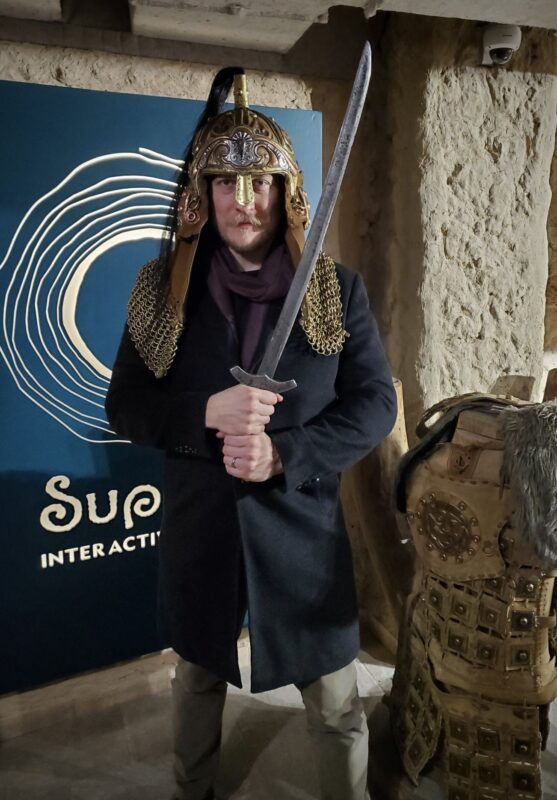When we asked our driver/translator what the traditional Kyrgyz food is, he seemed to think the question a flippant one, because the answer was so obvious: “Meat!”
So here we go!
Yak: Lean, healthy, absolutely delicious, sustainably raised locally by an expat who’s been here for nearly 2 decades, we’ll be eating this regularly, and we keep yelling at each other “I’m the YAK man!” (To the tune of Scatman John’s, I’m the SCAT man!) 🦬

Sheep: we’ve eaten sheep many times before; you can find it at Middle-Eastern restaurants the world over, and we’re big fans of that food genre… but here in Kyrgyzstan, we were served this sheep broth unlike anything we’ve trie. It didn’t even have any meat in it, but it was the sheepiest sheep taste you could imagine, but even sheepier than that. So sheepy. 🐏
Golden Eagle: We’d never eat a freedom-loving eagle, you monster! We did stroke the feathers of a hunting eagle. It was huge, beautiful, powerful, and freedom loving.
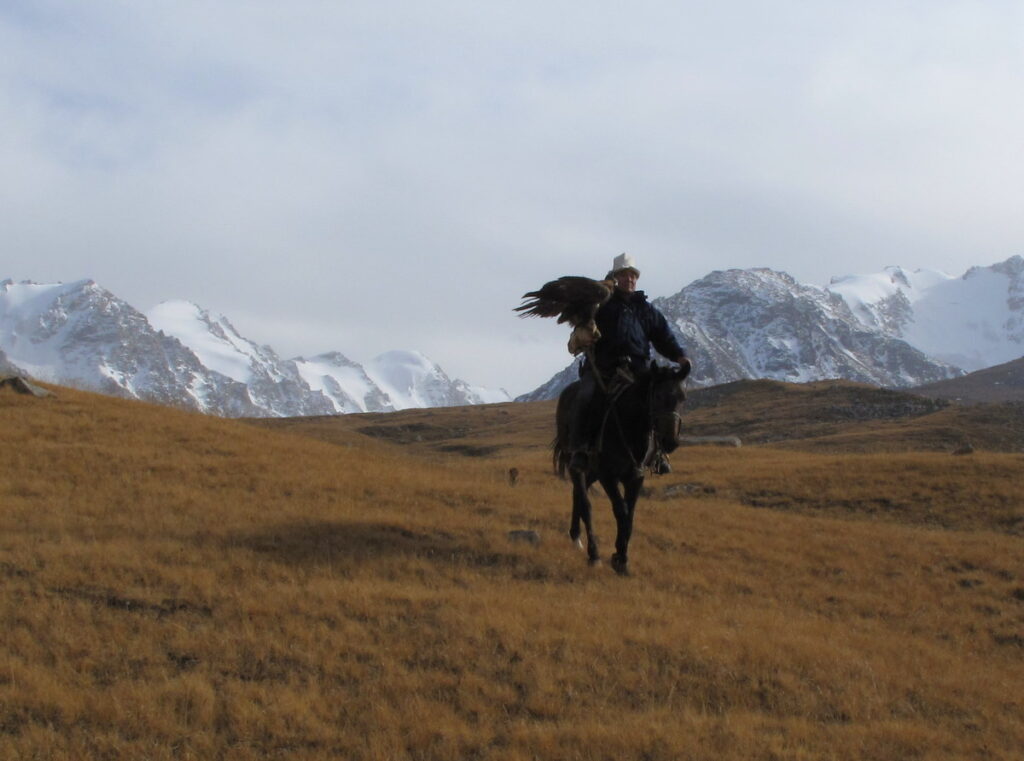
Kurut: Dry balls of fermented milk. Salty! Delicious crushed up in a chocolate bar, actually.
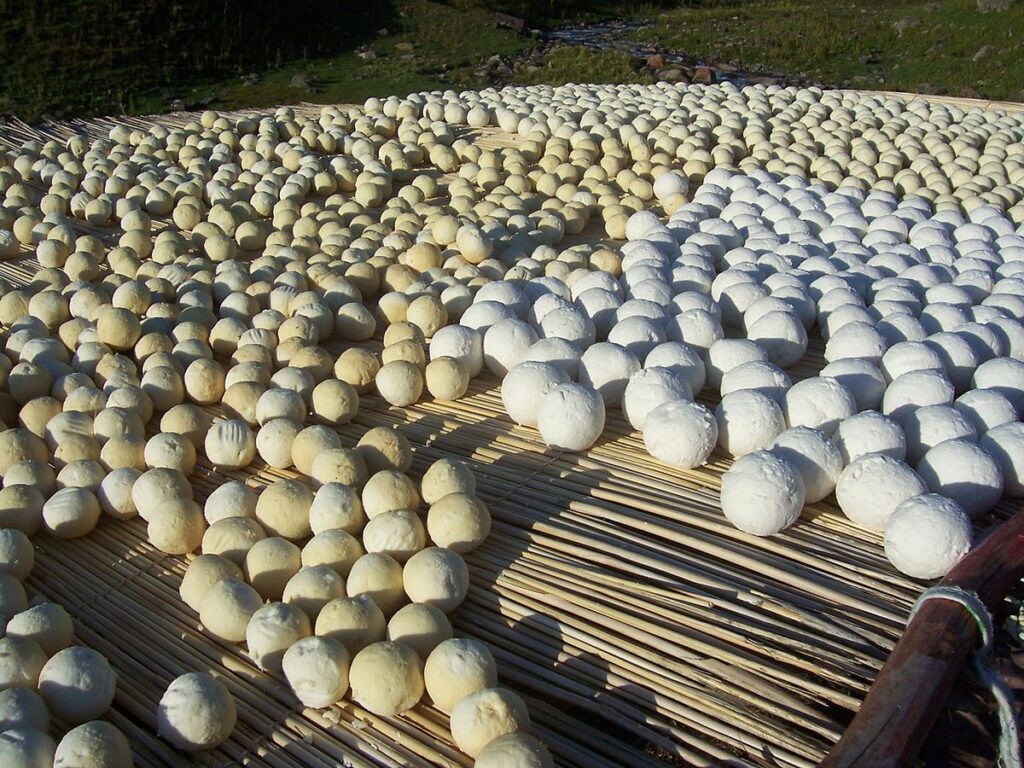
Kumis: Fermented mare’s milk, sour, carbonated, “not to my taste, thank you very much!” as our daughter politely says.
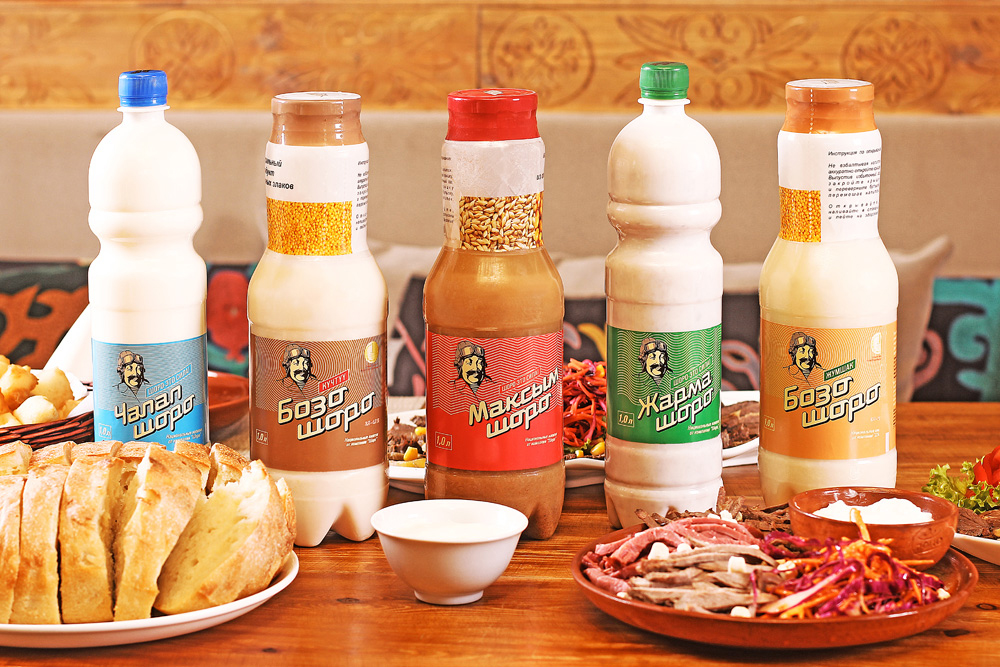
Maksym Shoro: A culturally important fermented grain drink, in several varieties. Not too far off from Kombucha… but much more wheat-y tasting? Or barley? Salty, sour, bubbly, and strong… Locals sympathize when I say I don’t like Kumis, but they really want me to like Shoro… and I kinda do? They say it’s best as a summertime drink, and I could see that. Back when I would run ultramarathons hosted by DayBreak racing, they’d have kombucha at the finish line, and those were the most thirst-quenching experiences I’ve ever had. I could see this being similar. There is a beautiful comic-strip tribute to the drink here, featuring the pic at the top.
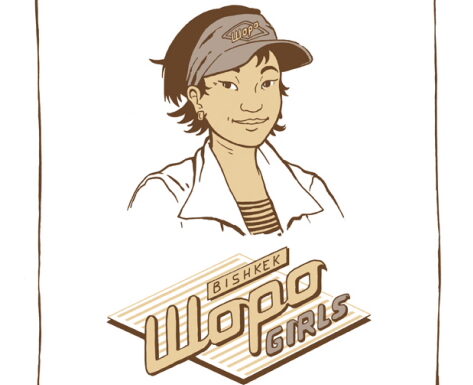
Horse: we tried 2 preparations that were pretty good, and 1 preparation that was gallop-back-for-more-good! 🐎
We sampled most of these delicacies at a local Bishkek museum/restaurant, where we learned a bit of Kyrgyz history:
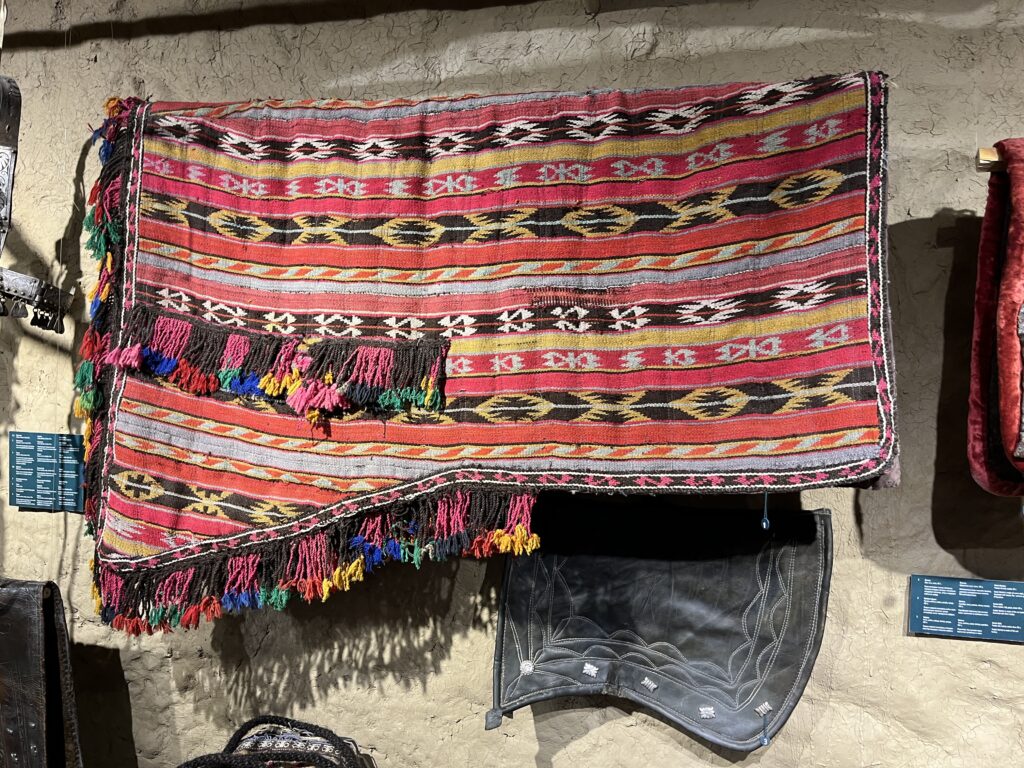
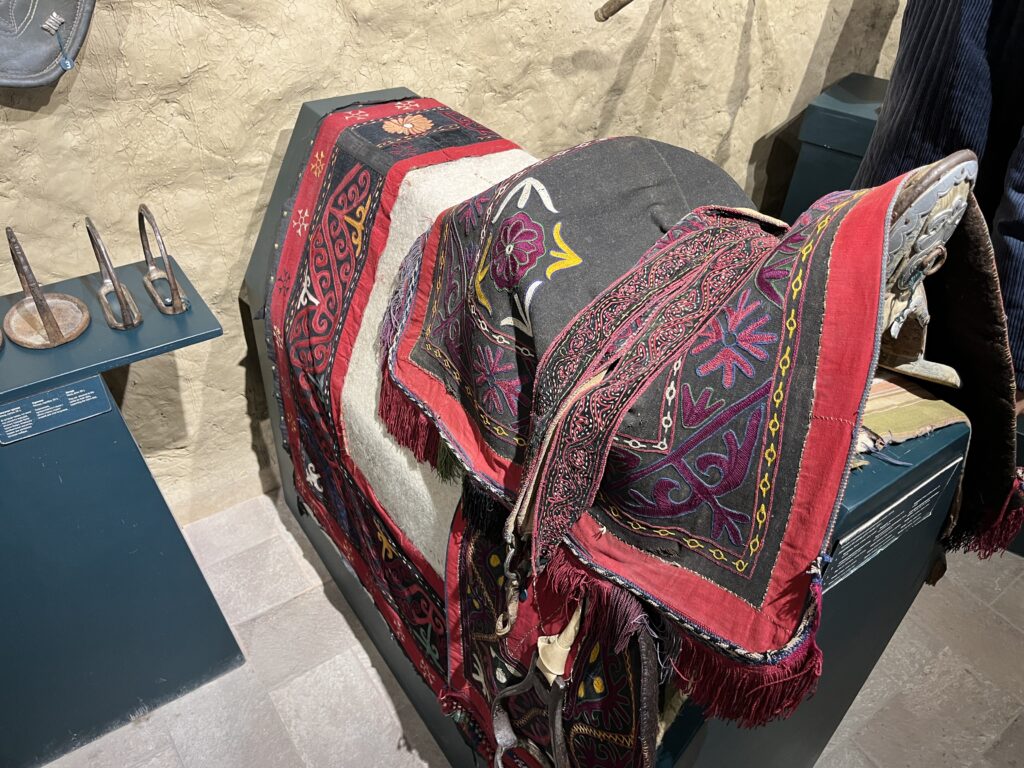
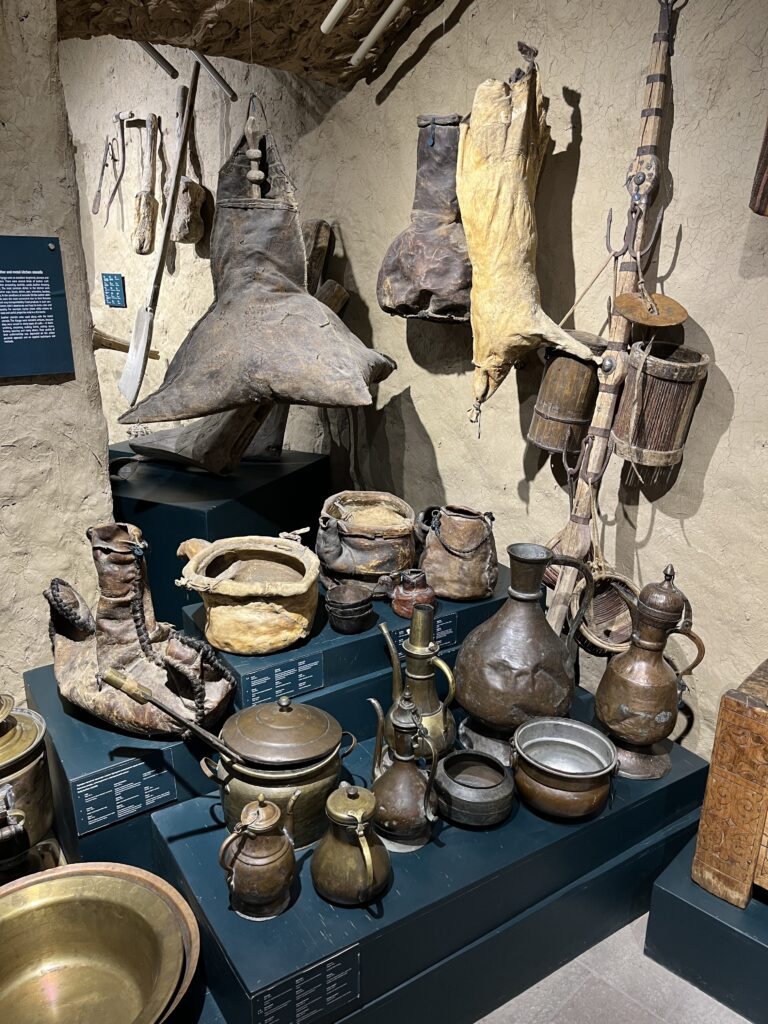
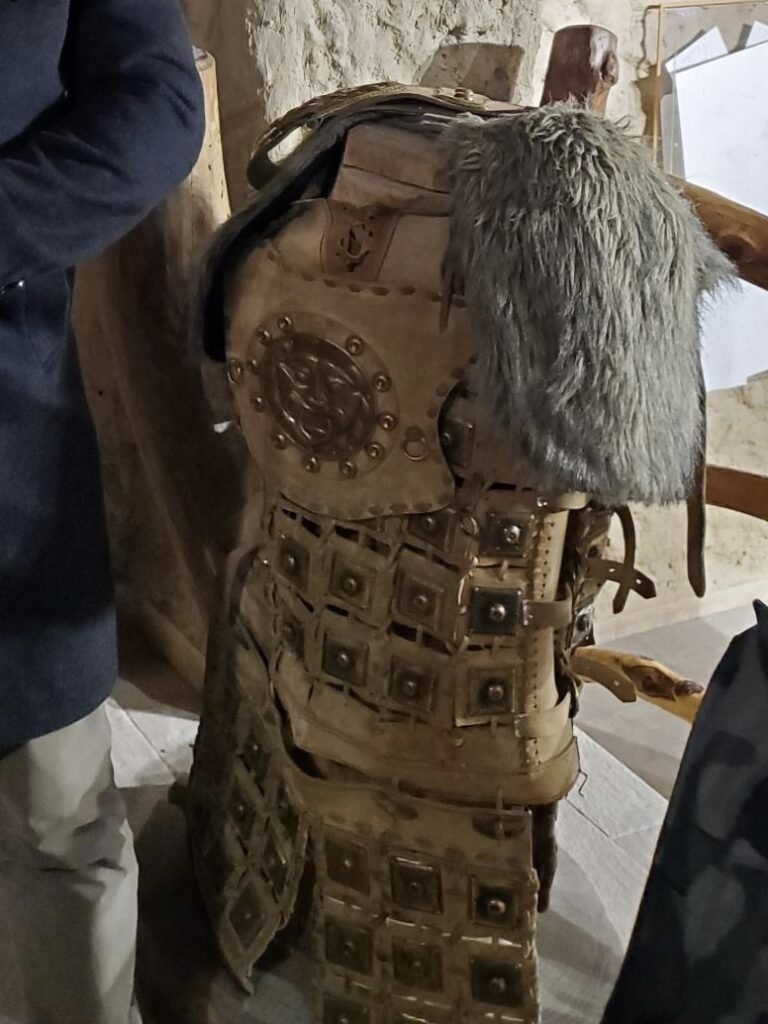
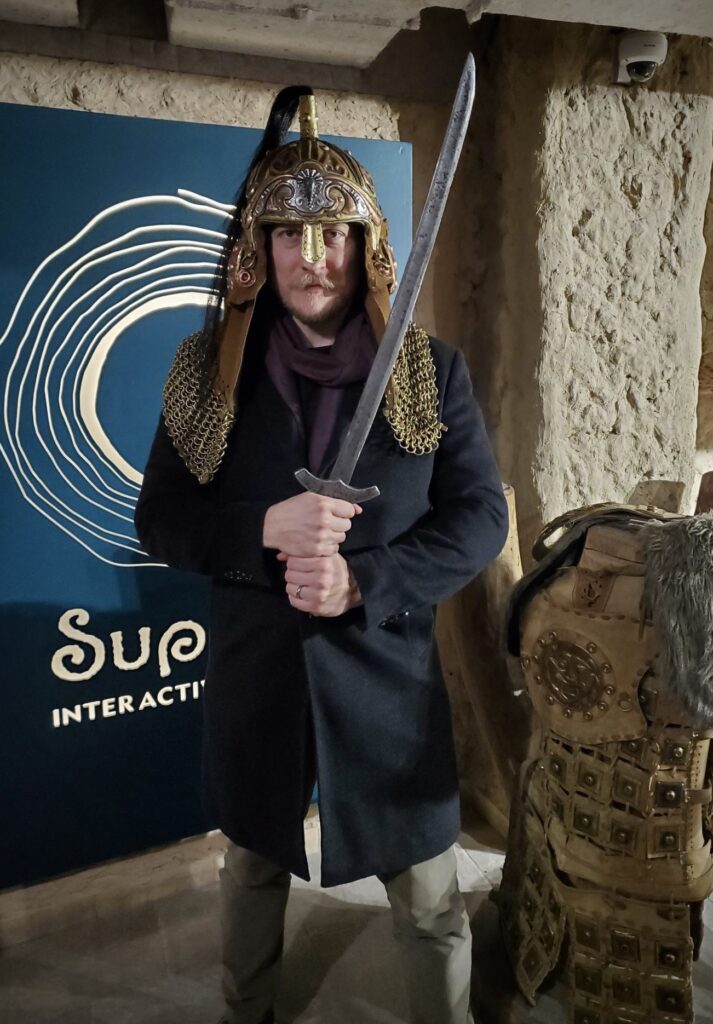
Historically, the Kyrgyz lived a nomadic lifestyle necessitating a waste-nothing ethic. Horses were first domesticated in this part of the world, so it’s only natural that their milk and meat is part of the traditional diet. Surprisingly, our 9-year-old daughter, who is enamored with horses like all 9-year-old girls, was excited to try horse meat, and found it quite tasty. Some of our family and friends have expressed heartbreak that we’d eat horse… but if you’ve ever eaten at Ikea circa 2010’s, you’ve probably eaten horse, too!
Anyway, what *should* we be eating? Why are some animals ok to eat, and others taboo? For example, this country is mostly Muslim, so pork is hard to find here – and I don’t really miss it. We were vegetarian for years before the kids came along, and our two months here has made me reconsider that that lifestyle. It’s too much meat!
Ideally, cultivating our curiosity and asking these questions will teach us more about ourselves. As we experience more of the world, we’ll better understand our place in it, and appreciate our own cultural heritage.
There’s something that rings true about eating new things as a way of gaining knowledge and perspective. Adam and Eve did it! But perhaps another way to learn is to put some numbers to cultural differences:
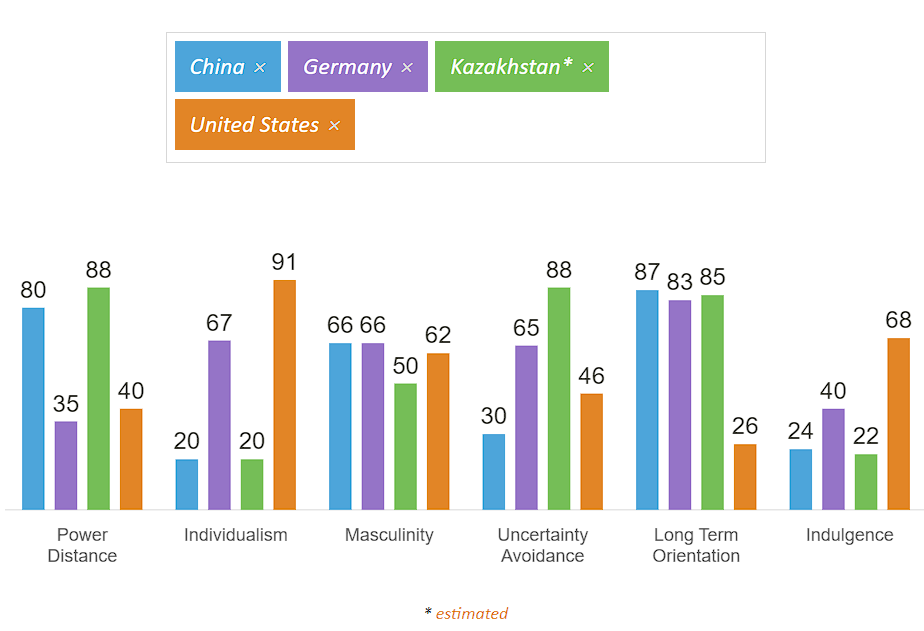
This graph comes from messing around on “Hofstede Insights Organisational Culture Consulting,” a firm that attempts to quantify culture. Of course, these sorts of methods have their critics, nevertheless it’s an interesting lens through which to view societies. I recommend playing around on that site and seeing how countries around the world differ in concepts like competitiveness (masculin) vs. harmoniousness (feminine).
On a similar note, I was impressed recently by this interview with Dr. Ken Dekleva, head psychiatrist around here for many years (before my time, sadly – he is well spoken of by those who remember him!). He speaks about how the most successful foreign service families are those who are more curious and willing to engage with new ideas and experiences. He cites the work of Dr. Hammer:
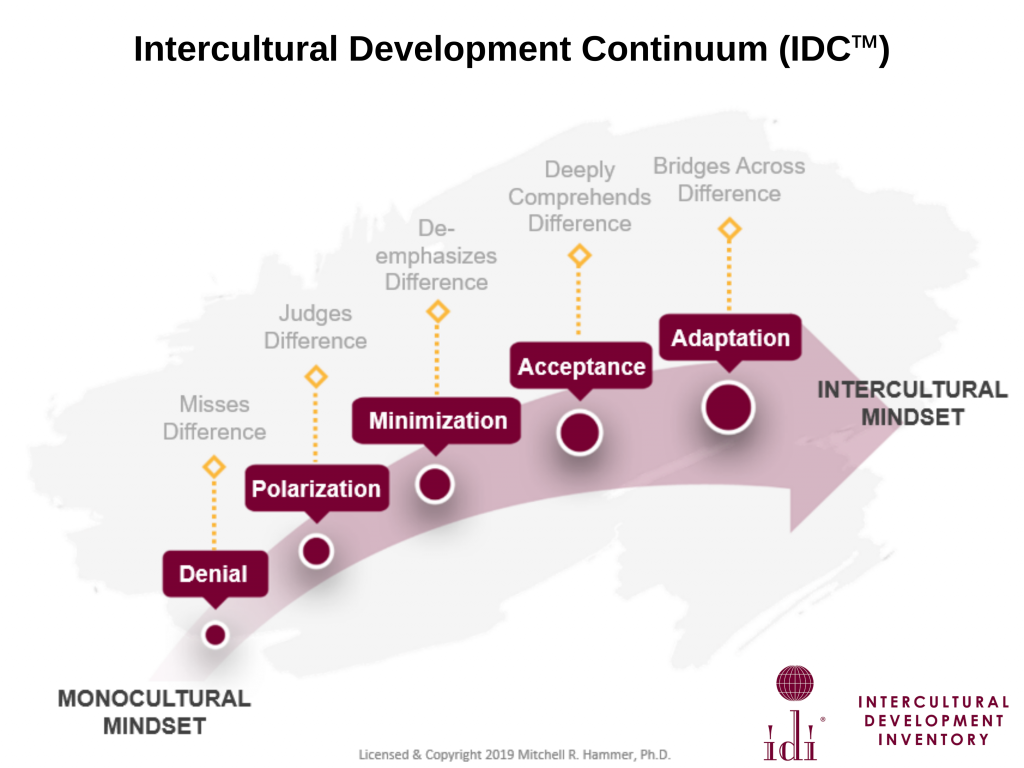
Maybe our time here in Bishkek can help our family “bridge across difference.” I think so. We probably won’t be eating much more horse meat. But we’ve already put in an order with the Yak man.
💌 Love from Bishkek! 💌
